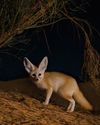Females leading the way
BBC Wildlife
|July 2022
I was pleased to read Melissa Groo’s feature (Where Are All The Women?) in the March 2022 issue, as I am a female wildlife storyteller and photographer.

Why does wildlife programming seem to mainly feature men out in the wild facing the elements and capturing intense moments, which of course can be dangerous? There are sadly very few professional female wildlife photographers. But we are out there taking risks, battling the elements, and facing danger.
Nature shows us that it is females leading the way. Elephant herds are led by matriarchs. They lead the herd in times of drought to water holes – the information being passed down from mother to daughter for generations. Lionesses are the main hunters in the pride, they work hard to protect food for their family as well as take care of the cubs. African wild dogs are also led by an alpha female: she will mate with her chosen male and then create a lasting dynasty.
In my travels, I have lived in many remote cultures, where women are the backbone of the culture-building their own houses, providing their own food, and taking care of family life. The world needs to see and hear from strong independent women making a difference and being fearless and bold. Nashipae Wilde, Kenya
PAUL MCGUINNESS REPLIES:
I couldn’t agree more, Nashipae. Melissa’s article raised a number of interesting points. It’s been one of the most popular articles on our website, so any readers who missed it, I recommend checking it out online. It’s worth noting that we’re very keen to hear from more women wildlife photographers here at BBC Wildlife, so any female snappers out there, please do get in touch and share your photos.
Tickled by tapirs
Denne historien er fra July 2022-utgaven av BBC Wildlife.
Abonner på Magzter GOLD for å få tilgang til tusenvis av kuraterte premiumhistorier og over 9000 magasiner og aviser.
Allerede abonnent? Logg på
FLERE HISTORIER FRA BBC Wildlife

BBC Wildlife
"I was terrified the elephant would ram us"
African elephant in Kenya
2 mins
January 2026

BBC Wildlife
ALL YOU EVER NEEDED TO KNOW ABOUT THE Fennec fox
THE FENNEC FOX IS THE SMALLEST fox in the world, with a body length that can be as little as 24cm.
3 mins
January 2026

BBC Wildlife
INTO THE PLASTISPHERE
A unique synthetic ecosystem is evolving in our oceans – welcome to the plastisphere
7 mins
January 2026

BBC Wildlife
“More than half of all animal life exists in a parasitic relationship, and all life lives in symbiosis”
Our survival depends on species evolving to live together - but some relationships take dark turns
7 mins
January 2026

BBC Wildlife
Are animals able to dream?
SLEEP IS A MYSTERIOUS THING. FOR A long time, we weren't sure why we do it.
1 mins
January 2026

BBC Wildlife
Does a cuckoo know it's a cuckoo?
ABSURD LITTLE BIRDS ACROSS THE world lay their eggs in the nests of other species, leaving the hapless parents to raise a changeling at the expense of their own offspring.
2 mins
January 2026

BBC Wildlife
Orcas killing young sharks
Juvenile great whites are easy prey for orca pod
1 mins
January 2026

BBC Wildlife
Ocean goes on tour
Acclaimed film touring the UK, backed by live orchestra and choir
1 min
January 2026

BBC Wildlife
Feisty bats hunt like lions
Winged mammals use a 'hang and wait' strategy to take down large prey
1 mins
January 2026

BBC Wildlife
SNAP-CHAT
Richard Birchett on magical merlins, wily coyotes and charging deer
2 mins
January 2026
Translate
Change font size

